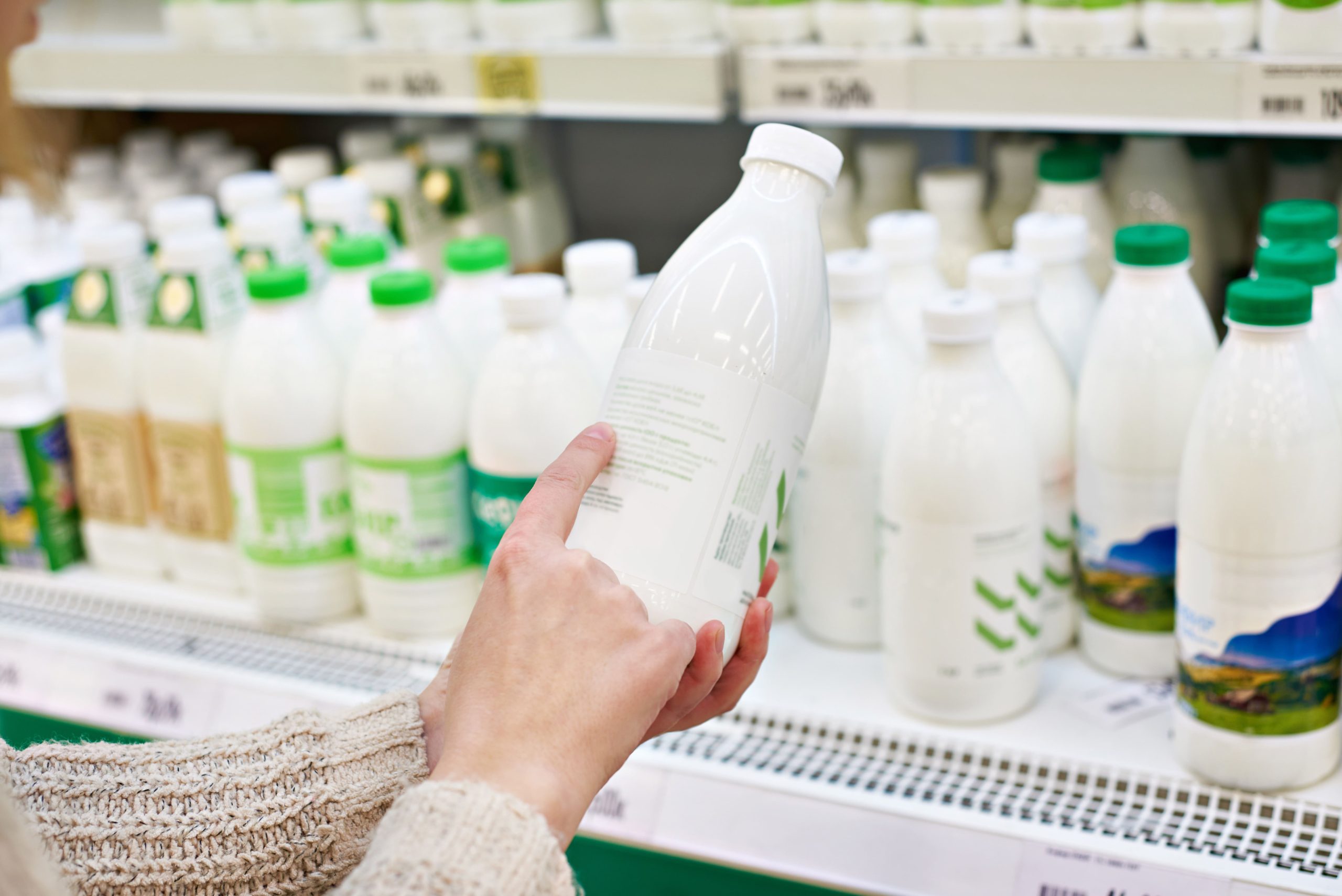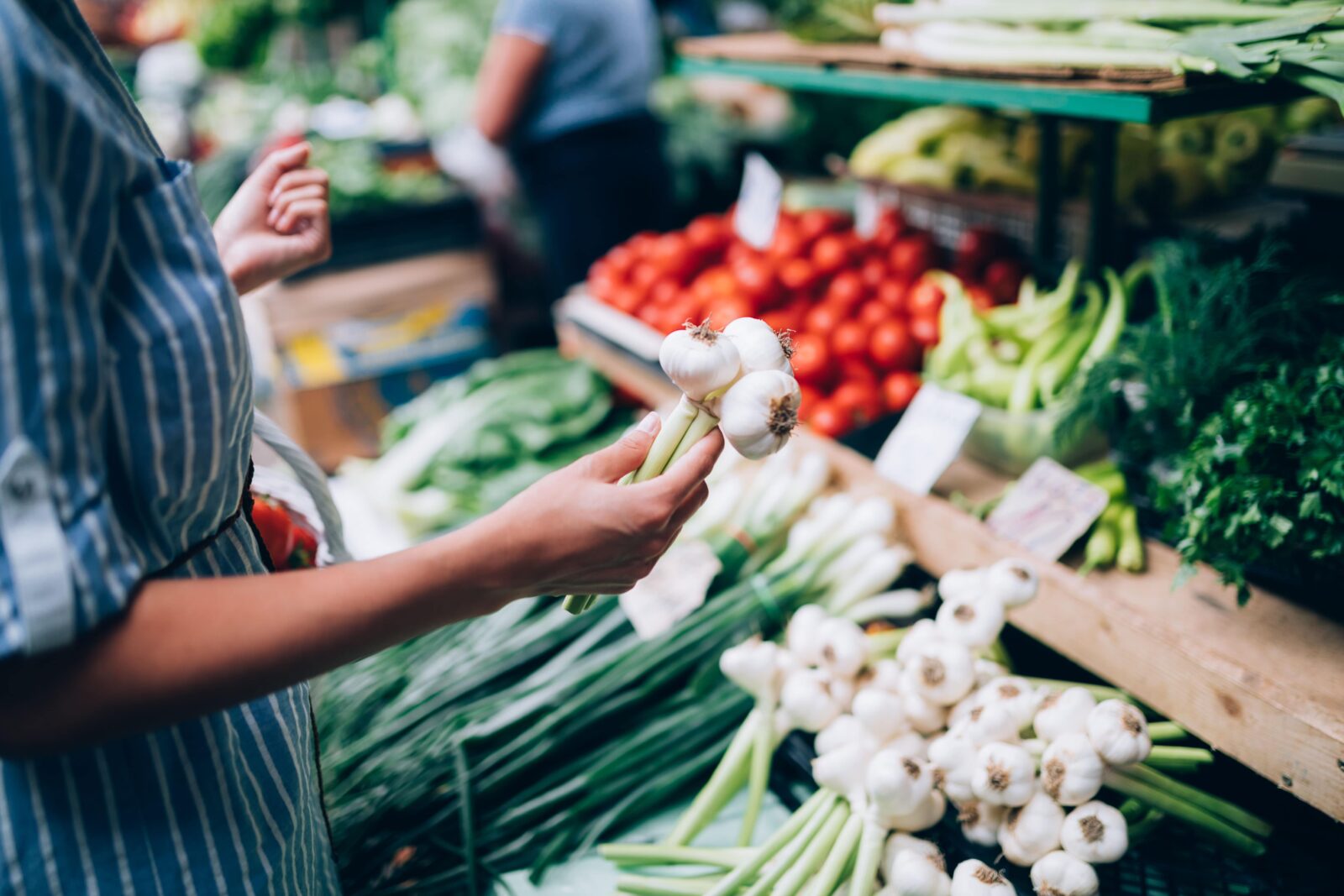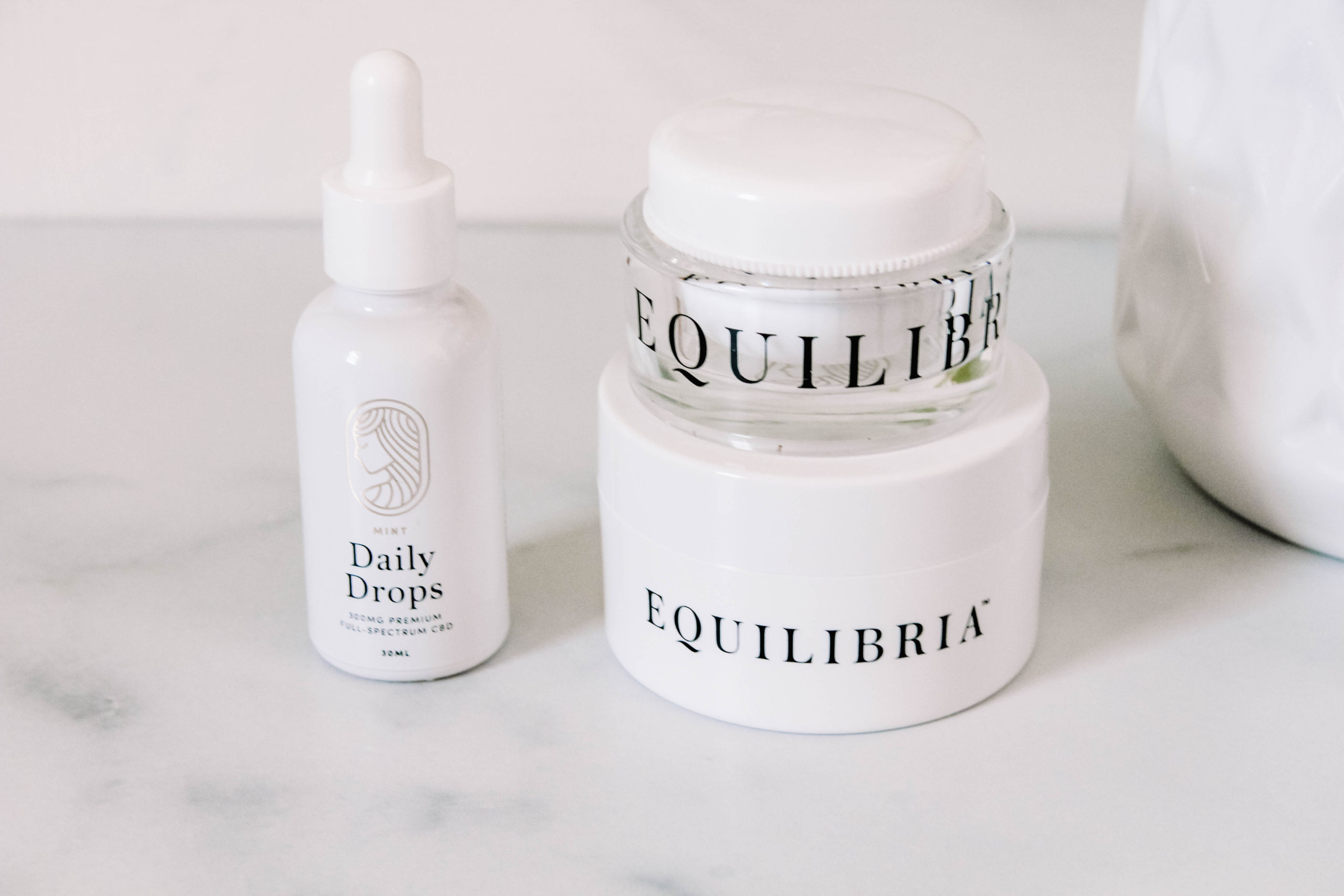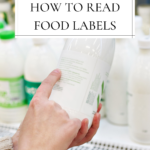Last updated on April 26th, 2023 at 04:29 pm
Food labels can be deceiving and frustrating – this is the ultimate ploy of the food manufacturers. Now, they know what they are doing, and their goal is to trick you into thinking you are making good choices for yourself and your family. This article will teach you how to read food labels, understand what the information you are reading means, and how to use this information to make better food choices for health and wellness.
Have you read the labels on any food packaging in your pantry, fridge, or freezer? What did you find? Is the information confusing, surprising, or even infuriating? As I mentioned before, these labels are intentionally deceptive. Therefore, it would be helpful to walk through definitions, common terms outside the package, and how to read the ingredient label.
The intent of this post is not to cause frustration, shame, guilt, or overwhelm. However, it is important to understand and realize that taking things one step at a time is acceptable. Above all, I advocate educating people to know and to do better. The truth is that most people don’t realize that they are falling prey to genius marketing skills. I hope this will empower and educate you to not fall prey to all the “healthy-looking” products with catchy phrases and no real benefits you want.
For one thing, it is essential to completely ignore the food labels screaming at you from the front of the package and instead flip it over and read the ingredients list. Moreover, reading the ingredients list is the only way to know exactly what is in your food. In fact, you will find way more value in reading the ingredient list than spending hours calculating all the nutritional data on the side or back of the package.

What is the problem with the nutritional facts?
The problem with the nutritional facts is that it creates another scenario of confusion. The thing is, not all calories, fat grams, or sugars are equal. For example, an avocado and donut contain 21 grams of fat. So please don’t let anyone tell you that avocado is terrible for you because it contains the same amount of fat as a donut. The same can apply to calories – a pack of Skittles has about the same number of calories as two cups of grapes, and yet the two are not even close to being equal. Another problem with the nutritional facts labels is that the stats they highlight tell us little about how highly processed the food package is.
So, how to read food labels? The ingredient list. However, the ingredients list is in order based on quantity – so whatever is first on the ingredient list makes up most of the product. Then it goes on to list the rest of the ingredients in the same order. My family and I like to follow a simple rule: if we don’t use a specific ingredient for cooking at home (we can’t pronounce it, or better yet, have no idea what it is), we choose not to buy the product containing said ingredient.
The rest of this post will drive home the importance of reading food labels, starting with the ingredients list. Sadly, food labels can mean many things, with little regulation on specific definitions. Even if they are, they can still be highly misleading. To repeat, this is all a ploy by these giant food companies to trick you into thinking they are providing you with wholesome and healthy foods.
How to read food labels and understand their meaning
Natural
The phrase “natural” is virtually meaningless (and you can safely ignore it) unless it applies to meat or poultry products. Natural means that the meat or poultry contains zero artificial ingredients or added coloring and minimal processing. Other than for meat and poultry, there are absolutely zero regulations on the word “natural.” Furthermore, most food manufacturers add this word to their labels to increase sales. If a food label were to say “Natural Strawberry Flavor,” it certainly doesn’t mean that the flavor was really from strawberries. It simply means that the flavoring isn’t artificial and probably comes from corn or soy.
Glyphosate Residue Free
This certification confirms that the product does not contain glyphosate (the world’s most-used and toxic herbicide.) It is important to realize that “organic” doesn’t ensure glyphosate residue-free food due to poor supply chain testing.
Organic
When a label says “organic or made with organic ingredients,” it doesn’t necessarily mean that all the ingredients listed are organic. Additionally, if a product does fall into this category, the product must contain at least 70 percent certified organic ingredients, excluding water or salt.
USDA Organic
Today “certified organic” means producing food without synthetic fertilizers, pesticides, hormones, antibiotics, or food additives, not genetically modified and non-irradiated, often destroying healthy nutrients. However, farmers and food producers can use natural fertilizers and pesticides. The animals producing organic meats, poultry, dairy, and eggs may only feed on certified organic feed without animal by-products and GMOs. Furthermore, the producers can’t administer hormones or antibiotics to the animals. Moreover, animals must have year-round access to the outdoors, which includes fresh air and direct sunlight.
On the other hand, even if something is USDA organic, feed lots are still a common and acceptable practice. There are no audits to ensure humane slaughtering practices and vague standards with no details describing what “in a manner that minimizes pain and stress” means regarding painful physical alterations. That is why I always encourage you to get to know your local farmer or call food companies and ask about their practices. In conclusion, the government regulates the term “USDA Organic.” You can generally trust this label no matter what food company uses it.
Certified Humane Raised And Handled
“Certified humane raised and handled“ means animals don’t live in cages, crates, or tie stalls. There are specifications for minimum amounts of space per animal.
Moreover, animals are free to do what comes naturally – for example, pigs must have space to move around and root. Additionally, only beef cows must have continuous access to outdoor pastures; there are no other outdoor requirements for other animals. Also, the producers can’t administer hormones or antibiotics to the animals. Lastly, audits on slaughterhouse facilities ensure compliance. On the other hand, feed lots are still a common and acceptable practice, and so is GMO feed. Furthermore, despite detailed descriptions of minimizing painful physical alterations, beak trimming and teeth clipping are common practices.
American Humane Certified
This certification allows animals to remain confined to crates and cages. So long as the minimum allotted space per animal allows natural behavior. Also, there are no outdoor requirements. Furthermore, it allows antibiotics for disease prevention commonly associated with unsanitary conditions. There are no inspections or audits to ensure humane slaughtering practices and no detailed guidelines on minimizing stress and pain during physical alterations. On the other hand, this certification prohibits using growth hormones. There are annual farm inspections and third-party audits.

Free Range
“Free-range” means that the hens are in a building, room, or area that allows them unlimited access to food, water, and continuous access to the outdoors during their laying cycle. Also, shade netting or another netting material can fence in or cover the outdoor area. Where things get confusing and unclear is that a patch of concrete outside of the building would qualify here. It doesn’t say how big the area is, if there is any grass or dirt, or even how often they need to use this space. I have heard and then read that it can even be a pop-hole for their heads, with no full-body access to the outdoors.
It is always best to call the farm or food company and ask what they feed the animals and their outdoor conditions. This label does not always mean the animals didn’t receive antibiotics and hormones.
Cage-Free
“Cage-free“ means that the hens are inside a building, room, or even enclosed in an area that allows them unlimited access to food and water. It also allows them to roam around the area during the laying cycle. This means they may never go outside, and it is completely acceptable to pack hens into a building with thousands of other chickens trampling each other. To summarize, these chickens still live in tight quarters, away from sunlight, fresh air, and their natural diet.
Pastured-Raised
“Pastured-raised” means that the animal had continuous access to pasture; they also often have access to their natural diets – grass for cows, insects for chickens, and so on. Still, some pasture-raised animals eat grain feed. Furthermore, the USDA requires documentation for producers to use this term. Also, there are no regular on-farm visits to verify the correct usage of this term. It is always best to call the farmer or food company to determine if the animals eat other feed, such as grain. This label does not always mean the animals didn’t receive antibiotics and hormones. Pastured-raised refers more to where the animal eats, while grass-fed refers to what they eat.
There is no federal standard for the term pastured raised. In fact, the USDA proposed to define “pastured raised” in 2002 but never actually went through with issuing the standards. Lastly, there are no on-farm inspections to verify that producers are using this claim correctly.
Grass-Fed
Regulations for the term “grass-fed” is pretty loose. Basically, this means that “grass-fed” can mean anything from a diet of some grass with mostly conventional grain feed to 100% pasture-fed for the duration of the animal’s life. It doesn’t tell whether the animals ate organic grass/feed, their raising practices, or their living conditions. In addition, there are no standards to minimize painful physical alterations, like tail docking and castration. There are also no audits to ensure humane slaughtering practices.
The USDA withdrew its grass-fed standard in 2016. Meaning animals no longer have to have continuous access to pastures during the growing season. Lastly, even though USDA requires documents from producers to use this claim, there are no regular farm inspections to verify the correct use of grass-fed claims.
USDA Process Verified
This shield doesn’t indicate anything specific about the meat product itself. It is only useful when used alongside a claim such as “grass-fed,” etc. Moreover, it simply means that the USDA has verified whatever claims attached to the shield through an annual on farm audit. However, there are no federal standards for many of these claims, so each producer can write their own criteria for each claim.
100% Vegetarian
This means the animals ate a purely vegetarian diet of conventional soy or corn (hello GMOs.) Also, if it says less than 100%, there is no way of knowing if the animals ate an entirely vegetarian diet. However, it is important to remember that chickens and turkeys eat insects and worms naturally as a part of their diet; removing these natural elements will affect the nutrient density of the final food product.
Grain Fed
This means that the animals were given grains as their feed. Also, this does not mean they were always fed grains; they could have been supplemented with other animal by-products. Additionally, remember that cows and sheep are herbivores and naturally eat grasses, not dried foods such as grains, corn, soy, or legumes.
Wild-Caught
“Wild-caught” implies that the sea creature or fish you are purchasing grew up in its natural habitat, eating the foods that it is supposed to eat in the first place. It doesn’t, however, mean that the fish-catching methods are sustainable. Since the FDA has no rules to define any of these claims, the practices vary greatly. In fact, fraud, mislabeling, and substituting different species are not uncommon in the seafood industry. Therefore, independent verification is necessary. Call the food producers and start asking questions.
Farm-Raised Seafood
“Farmed-raised” means that fish or sea creatures are produced in a small enclosure and are fed an unnatural diet. Both of these increase disease, leading to many producers using antibiotics – something you don’t want in your food or gut. Although the federal government doesn’t currently allow any domestic seafood to be labeled organic, fish labeled organic can be imported. Unfortunately, seafood labeled as organic is likely farm-raised.
Farmed Responsibly ASC Certified
Farmed Responsibly ASC Certified requires traceability for each animal from the ocean to the plate. Furthermore, this certification doesn’t allow the use of transgenic fish, and a robust third-party verification system is in place. But they do allow the usage of GMO feed and antibiotics usage when a veterinarian diagnoses a disease.

No Hormones Administered
This label simply means the animal didn’t receive hormones during its life cycle. It is interesting to note that by law in the United States, poultry and hogs cannot receive hormones, so this is another smart ploy by companies to make the consumer believe that they are doing something “extra,” when in reality, they can’t administer hormones to these animals in the first place. It is important to understand that even when a product says “no hormones,” the animal may not have received any particular type of diet. This label also does not guarantee that these animals didn’t receive antibiotics.
No Antibiotics
There are so many different terms for this one.
- no added antibiotics ever
- no antibiotics administrated
- raised without antibiotics
- no antibiotics
- no antibiotics added
These terms imply that the animals never received antibiotics. To use this term, producers must provide the USDA with documentation that their animals never received antibiotics in their feed, water, or by injection. However, there are no regular on-farm inspections to verify the usage of the claim. Furthermore, the USDA defines the term “no antibiotics” to mean that poultry and red meat didn’t receive antibiotics.
The USDA proposed to define “raised without antibiotics” to mean “never received antibiotics from birth to harvest” back in 2002 but never issued it.
On the other hand, the following terms are common in marketing different animal products.
- raised without subtherapeutic antibiotics
- responsible use of antibiotics
- not fed antibiotics
In this case, it implies healthy animals didn’t receive antibiotics to speed growth. Still, animals may have received antibiotics for other reasons like disease prevention or treatment due to overcrowding. To use this term, producers must provide the USDA with documentation. However, there are no regular on-farm inspections to verify the usage of the claim. While some producers may follow the World Health Organization’s recommendations and limit antibiotics important in human medicine, there are no federal standards.
The USDA proposed defining “no subtherapeutic antibiotics added” in 2002 but never issued those standards.
rBST-Free
Many dairy cows receive rBST injections, also known as Recombinant Bovine Growth Hormone (rBGH.) This is a genetically engineered growth hormone used to artificially increase milk production. Leading health organizations such as the National Institute of Health and the American Cancer Society state that they need more studies to determine whether human consumption is safe. When a label says “rBST-free,” the cow did not receive growth hormone injections. All organic milk is rBST-free. Also, the FDA requires documents for producers to use this term. However, there needs to be on farm inspections to verify the correct use of the term.
Furthermore, there are no federal standards about rBHG. Moreover, the FDA considers the claim ‘r-BGH free” false since all milk contains natural growth hormones. Still, they provided guidelines on voluntary labeling of dairy as not treated with rBGH.
Heritage Breed
Heritage breeds refer to historic animal breeds raised before the industrialization of the modern food system. Furthermore, modern breeds are breeds that grow unnaturally faster and mature earlier.
The cool thing about heritage breeds is the preservation of genetic diversity and extinction. Also, based on their genetics, these historic breeds are often less susceptible to diseases. They typically spend most of their time outside in less crowded environments. For producers to use this claim, they need to file the appropriate documentation with the USDA. However, there are no regular on farm inspections to verify the use of these claims. Unfortunately, there is minimal oversight on the term “heritage breed.” So, many meat producers will use this claim or “heirloom” when their animals are a mix of modern and historic breeds.
Genetically Modified Foods
Genetically modified foods (or GMOs) are plants and animals with DNA altered through genetic engineering. Additionally, genetically modified foods are legal in the United States. For example, the following foods and feed supplies: alfalfa, canola, chicory, corn, cotton, flax, papaya, potato, rice, soybean, squash, sugar, beet, and tomatoes. I highly encourage you to dive in and research the effects of genetically modified foods for yourself. There has been no long-term testing on their safety and impact on human health. GMO foods don’t require labeling in the United States, so it is best to buy certified organic food to avoid them.
Irradiation
This is a process where a machine generates ionizing radiation in gamma rays, x-rays, or electrons to kill bacteria in food. Irradiation is common in producing most non-organic meat, eggs, produce, and spices. However, this process also destroys many vitamins and nutrients in the foods. According to The Centers for Food Safety, this process also doubles the amount of trans fat in beef, which increases the risk of heart disease. In short, this process is supposed to solve unsanitary practices on industrial (or factory) farms and dramatically increase product shelf life. As usual in the United States, irradiated foods don’t have to be labeled “unless materially changed.” Some of these companies have suggested replacing labeling irradiated foods with “pasteurized,” which is an entirely different process. If you wish to stay away from these kinds of foods, it is best to always buy certified organic.
Superfood
There is no definition or regulation around the term “superfood” for products. Most of the so-called superfoods are simply real foods.
Made With Real Fruit
This one is fun, especially for parents. In these products, even though a little bit of fruit may have been used as advertised, it does not have to be the fruit pictured on the front of the package, and to make things worse, it can be “fruit” that has been processed down into what’s nothing else than sugar, an excellent example of this is fruit juice concentrate.
Sugar-Free
Be aware of this one. When a food product is advertised as “sugar-free,” that only means that an artificial sweetener has replaced the actual sugar. Did you know that artificial sweeteners were invented in a lab by food scientists and that these sweeteners have only entered the food system as recently as a few decades ago? I don’t know about you, but I will not allow myself or my family to be a human experiment in all these franken-foods. In general, I prefer to stick to real and traditional foods – that is time-tested and true. Here is a list of all the names of sweeteners (artificial and some natural sources) that they use on food labels.
No Trans-Fats
Trans fat is considered to be the worse type of fat that is in the food supply. So, trans-fat is created when hydrogen is added to vegetable oil in a process called hydrogenation to make it more solid. Therefore giving processed foods a longer shelf life. Also, restaurants use partially hydrogenated vegetable oil in the deep fryers because it is cheap and doesn’t have to be changed often. A nutrition label can say that a product has “no trans-fat” even if it is not true – according to the FDA, the nutrition fact label can state 0 grams of trans-fat if the food product contains less than 0.5 grams of trans-fat per serving. So if you eat several servings of food containing 0.4 grams of trans-fat – it will add up really fast. To void trans-fat, you must look for and avoid ‘partially hydrogenated oil” on the ingredient list.
Another note on trans-fat: even though the government finally admitted that it is a real threat to public health, they have only requested that using partially hydrogenated oils be reduced. The food companies have up to three years to comply, and even then, they could petition the FDA to permit specific uses of these franken-fats. It is basically up to us as consumers to avoid trans-fats altogether.
In reality, you are all armed with knowing what all the food labels mean, but you may feel slightly overwhelmed, thinking well, what the heck am I supposed to buy? Don’t fret – I will give you another tool to put in your toolbox so you can grocery shop like a champ – knowing how to read food labels.

Now that you know how to read food labels, what are the best options:
Eggs & Poultry
From a nutritional and animal welfare point of view – the best choice is to look for “organic and pasture-raised” eggs and poultry.
Meats & Organ Meats
From a nutritional and animal welfare point of view – the best choice is to look for “organic and 100% grass-fed, or grass-fed & finished, or 100% pasture-raised” meats and organ meats.
Pork
From a nutritional and animal welfare point of view – the best choice is to look for “organic and pasture-raised” pork.
Fish & Seafood
From a nutritional and animal welfare point of view – the best choice is to look for “sustainably wild-caught” fish and seafood.
Dairy
From a nutritional and animal welfare point of view – the best choice is to look for “organic and 100% grass-fed, raw, whole milk” dairy products. This, however, is very difficult to find, depending on your state and where you live. Alternatively, most health food stores carry “organic, pasture-raised, small-batch pasteurized, whole milk” dairy products.
Fruits & Vegetables
Always looking for “organic” is preferable, but this is not always feasible for everyone. Therefore, a great hack (if you fall in this category) is to use the EWG’s “dirty dozen list.” This is simply a convenient little list of the produce with the most pesticide residue you want to buy organic.
Regarding food and eating, I live by one simple rule; to eat food as properly found in nature and as it was initially intended. For example, cows, bison, and sheep were made to eat grass, so grass-fed beef, bison, and sheep are best. Chickens were not intended to live in feedlots, so pasture-raised chicken meat is best. Eggs come with both the yolk and a white, so eat the whole egg, friends, and cow’s milk is naturally full of fat – so full-fat dairy products are a must. You get the idea, right?
Eating and food have become so complicated over the last few decades, and it is time we uncomplicate, unlearn and begin nourishing.
Read more: “Simple Steps To Navigate The Grocery Store.”
Further Resources
– Farmer’s Market finder for your area.
– Raw dairy farm finder for your area.
– Meat Farm finder for your area.
Disclaimer: This post is not intended to provide medical advice, diagnosis, or treatment and is for educational purposes only
For pantry staples at discounted prices, check out Thrive Market and save 40% off your first order!
*****
For quality, grass-fed, and pastured raised meats, check out Butcher Box and save $50 on your first box!
*****
To order bulk organic and sustainably harvested herbs and spices, visit Mountain Rose Herbs!
*****
For quality pantry staples and pastured raised meats in bulk, check out Azure Standard!
*****
For quality raw dairy products, check out Miller’s Organic Farm!





+ view comments